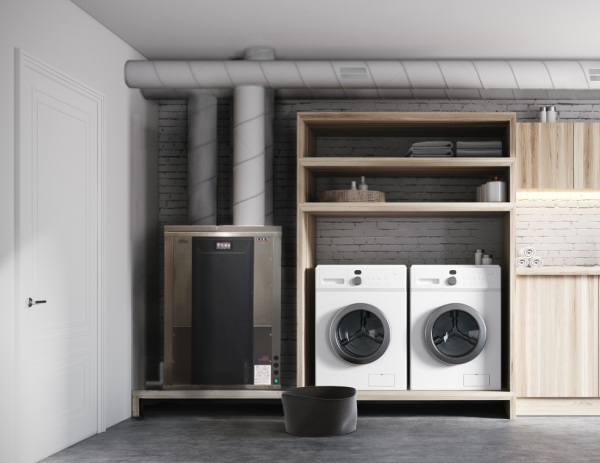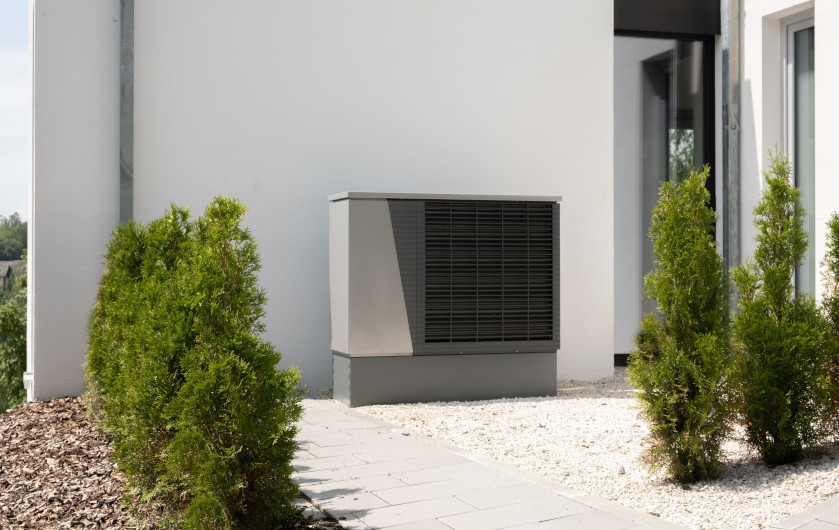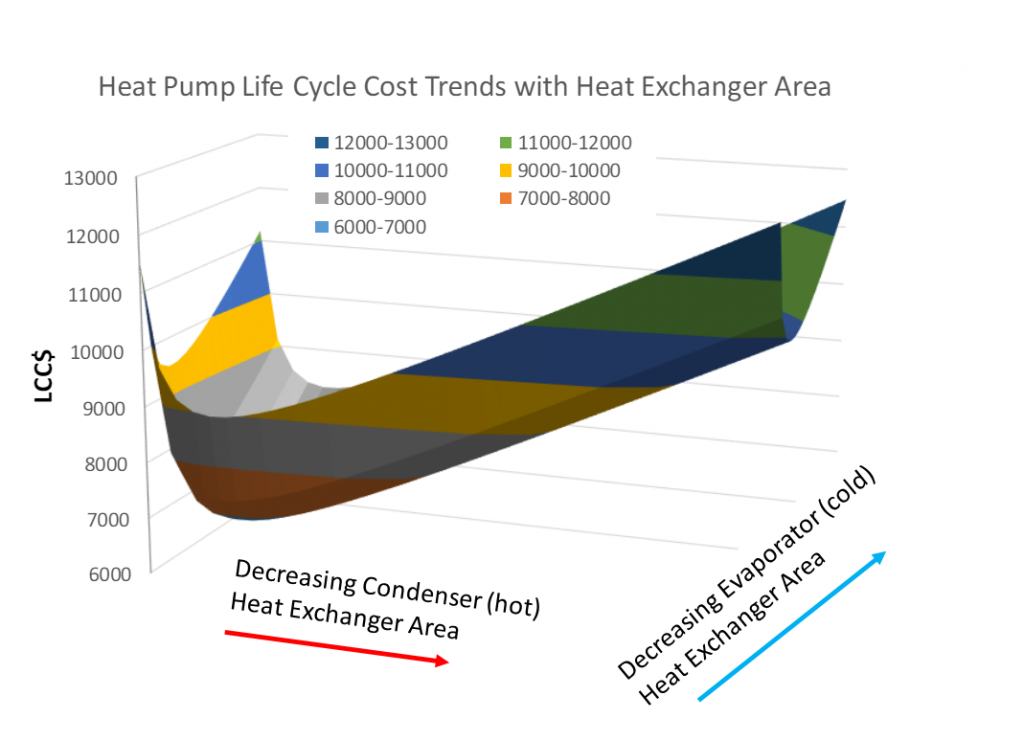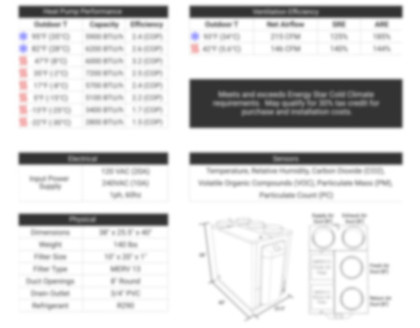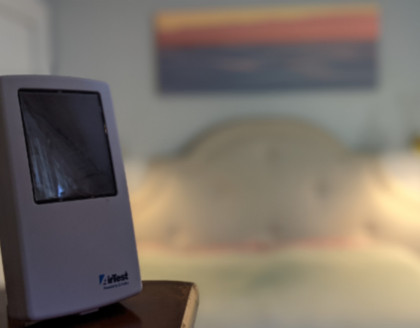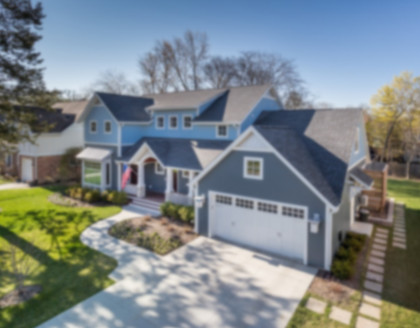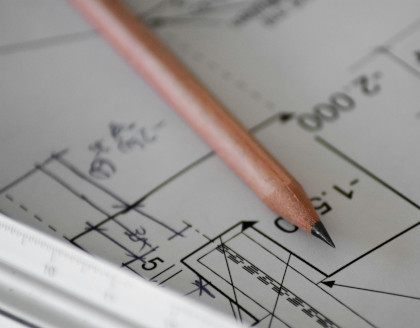High efficiency mini-split heat pumps are growing in popularity. Some homes only use mini-split heat pumps for conditioning. Other homes use them in combination with other systems for additional conditioning flexibility and redundancy.
Let’s assume you are working on a project and are considering using ductless mini-split heat pumps. You’ve worked hard to design a high performance home that only requires 1 ton (12,000Btu/h) of heating and/or cooling capacity and are considering using a ductless mini-split. Should you:
1) choose a single 1 ton mini-split heat pump?
2) choose two 1/2 ton mini-split heat pumps?
3) choose two 1 ton mini-split heat pumps?
The answer isn’t so straightforward. The first two answers make sense. The third answer seems unreasonable because everyone knows overcapacity is inefficient. Or is it?
Answer 1) is least expensive in upfront cost, but distribution of heating and cooling from a single mini-split requires a relatively simple home (open floor plan) without significant spatial and temporal comfort load variations as well as occupants with comfort condition tolerance.
We pay a significant price in human productivity when we’re uncomfortable. We lose one percent in human productivity for every degree (F) outside of our personal comfort range. And 1% of a human’s productivity is much, much more valuable than the energy cost of comfort conditioning.
Answer 2) is reasonable because although the upfront cost is more expensive, a home can be “zoned” for better comfort control. An additional benefit is that two “half ton” mini-split heat pumps operate more efficiently than a single one ton mini-split! One high quality mini-split manufacturer (see Figure 4) lists a SEER value of 33.1 for their half ton, ductless mini-split, and a SEER value of 26.1 for their one ton unit, for an efficiency increase of 27%! There are few opportunities in today’s high performance homes with this type of energy performance gain.
Answer 3) is not so obvious because in yesterday’s world of “bang-bang” (on/off) capacity control, a significant efficiency loss occurs with oversized systems. In today’s world of variable speed (inverter) capacity control, the opposite occurs. Two 1 ton mini-split heat pumps operating at half capacity have higher combined efficiency than a single 1 ton heat pump operating at capacity! In fact, two 1 ton mini-split heat pumps operating at half load can have the same efficiency as the two 1/2 ton mini-splits operating at full load. What?
Here’s the interesting part. Several manufacturers’ small tonnage mini-splits are all the same machine! A close examination of a manufacturer’s line of low capacity mini-split heat pumps (ex, 1/2 ton or 6000Btu/h; 3/4 ton or 9000Btu/h; 1 ton or 12,000Btu/h; 1 1/4 ton or 15,000Btu/h nominal capacities) reveals they are identical machines with the same nuts, bolts, sensors, and circuit boards.
Increased Capacity Equals Increased Efficiency!
When seeking economically optimized solutions, one relies on component manufacturers to economically optimize the products they are selling. Competition drives heat pump manufacturers to achieve the best performance at the best cost. Manufacturers strive to have one of the best “yellow tag” ratings at a reasonable price for the unit’s nominal heating and cooling capacity. In this section, we want to provide a conceptual framework for understanding why a heat pump has higher efficiency when it is operated at heating and cooling capacities below the nominal capacity rating. That is, we wish to answer the question as to why choosing two heat pumps is more efficient than one!
Three primary factors determine the optimal design of a heat pump:
- The Second Law of Thermodynamics (2ndLoT)
- Heat exchanger heat transfer characteristics
- Cost of heat exchangers
The 2ndLoT is often thought of as a cruel ruse played on engineering students in thermodynamics courses. Nothing could be further from the truth because the 2ndLoT provides a framework for understanding the performance limit of any process. In our case, the 2ndLoT defines how much compressor power is needed for “pumping” heat. If one wishes to pump heat from the inside of a house to the outside during summer, a hot day requires more compressor power than a warm day. Likewise, if one would like to pump heat from a bitter cold outside to the inside of a house, more compressor power is needed than on a cool day.
Heat exchangers are required for transferring heat between the heat pump and its surroundings. During summer conditions, the indoor mini-split heat exchanger (evaporator) must be colder than indoor air for heat to flow from the inside house air into the refrigerant boiling in the heat exchanger. Likewise, the outdoor heat exchanger must be hotter than the outside air temperature to exhaust heat from the heat pump to the outside air. Winter time heating occurs in the opposite manner.
A small heat exchanger requires a larger temperature difference between the heat pump and the surrounding air than a larger heat exchanger for moving the same amount of heat. For example, a heat exchanger twice the size of another heat exchanger reduces the temperature difference between the heat exchanger and the surrounding air in half. This heat exchanger characteristic directly impacts the heat pump efficiency by reducing the overall temperature difference that heat is pumped against.
Heat exchanger cost provides information to determine the optimal design of the heat pump. Reaching the 2ndLoT maximum heat pump efficiency limit requires infinitely large indoor and outdoor heat exchangers. Infinite heat exchangers cost an infinite amount of money (just like an infinite amount of wall insulation). Tiny heat exchangers require a lot of energy because the reduce heat pump efficiency with large temperature differences. An economic optimum for a heat pump generally exists in which the sum of lifetime energy cost plus the heat exchanger costs are minimized.
The analyses for determining the most economical heat pump design is easier described than demonstrated because the combined mathematical relations are cumbersome and require extensive analyses. For example, what should the manufacturer choose for outdoor and indoor conditions? If the unit will only be sold in Florida, the manufacturer should use climatic conditions typical for that region. Most manufacturers would like their product to have a broad geographical distribution potential, which requires optimizing over a broad range of conditions. As discussed previously, the lower cost Mitsubishi heat pumps should not be used in regions that experience weather below -4F. For those regions with winter weather temperatures greater than -4F, any of the Mitsubishi units in Figure 5 could be selected. Note that one would optimize each design configuration with each heat pump model to compare the optimal configurations.
The figure above shows a simulation surface of Life Cycle Cost (LCC) for a heat pump based on the 2ndLoT, heat exchanger modeling, and economic costs typical of heat pump heat exchangers. The LCC increases rapidly with heat exchangers smaller and larger than those of the economic optimum. For the heat pump modeled in Figure 8, the minimum (optimum) lifecycle cost is $7000, with $4300 of energy cost and $2700 for installed heat pump cost. This optimal heat pump uses 700W of electrical power and has a COP value of 5.0 (EER = 17). The ambient conditions assumed are 104F (outside) and 68F (inside).
Most comfort conditioning systems only operate at a fraction of their “design day” capacity. If the heat pump modeled in Figure 8 is operated at half of its design capacity, the heat exchangers are twice as large as needed for its nominal heating and cooling capacity ratings. Doubling the heat exchanger size per capacity, as previously discussed, reduces the temperature difference between the heat pump and the surrounding air causing an increase in efficiency. For the heat pump modeled in Figure 8, the COP increases to 6.0 (EER = 20.4) from 5.0 for an efficiency increase of 20%. Note that an electric resistance heater has the poorest heating efficiency of any heat pump with a COP of 1, and, of course, it has no ability to cool (cooling COP = 0).
Returning to our introductory discussion, is it better to install a single heat pump that meets a home’s comfort conditioning capacity needs, or to install two heat pumps that can better distribute comfort while also achieving higher energy efficiency? The answer will be revealed by conducting economic analyses of the single heat pump and dual heat pump cases, and comparing those results. If the single heat pump case has a lower life cycle cost because the dual heat pump energy savings are less than the extra heat pump cost, the dual heat pump may still be a desirable option based on improved comfort distribution (and its associated value) and the value of redundancy (if a unit breaks during extreme weather, rather than calling an emergency repair person, one can wait). That is, one should think beyond energy and place value on our health and comfort.

